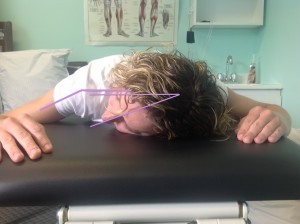Do you have pain during or after sleeping? Do you wonder if it is your position? Your pillow(s)? Or have you even ever considered your night pain or morning pain to be related to your sleep position?
Ergonomics is not just for your position at your computer desk, it is also an important consideration for your sleeping positions. Most of us spend just as much time in a sleeping position as we might at a computer, or more. Consider if your sleeping position, which you may be in 42-56 hours a week (6-8hrs x7 respectively), is hindering your recovery, than even being diligent with your physiotherapy (which we all are of course) will likely not resolve the issue fully.
Over the years I have helped many people with adjusting their desired sleeping positions to be more ergonomic for their needs and injuries. No one sleeps the same, no one has the same needs. Finding what works for you will be trial and error; however, I urge you to spend the time and effort to finding a comfortable and healthy sleeping position for yourself. This/these positions may change daily or over time, but your attention to your body’s response to how you feel after a nights rest is an important gift you should give yourself.
Below you will find some video’s explaining basic principles of general healthy sleeping positions and tricks, and some pictures depicting the ergonomics of these positions.
If you have any questions please contact Brenna. For an assessment and individualized recommendations of your sleep position please book an assessment appointment.
Side Sleeping Ergonomic Video

Side Sleeping Ergonomics: Head lower than breastbone/spine and legs causing a hip angle which pulls on the low back. In this scenario both shoulders are rolled in.
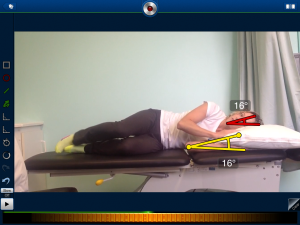
Side Sleeping Ergonomics: Head higher than breastbone/spine and legs causing a hip angle which pulls on the low back. In this scenario bottom shoulders is at a more extremely rotated position which is also hard on the elbow and nerves of the upper extremity.
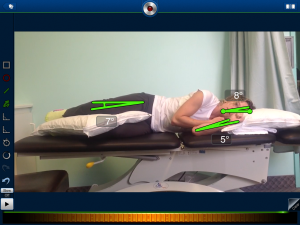
Side Sleeping Ergonomics: Head more neutral with breastbone/spine and legs more parallel to bed also therefore pulling less on the low back. The bottom shoulder is at a more natural position which is also easier on the elbow and nerves of the upper extremity. The top shoulder is still rolled in, and therefore a pillow in front to rest the top arm on would be best (see video).
Stomach Sleeping Ergonomic Video
- Stomach Sleeping Ergonomics: Although stomach sleeping without a pillow under the head is better than one cranking the head up and back, there still can be some extreme ranges of motion we can attend to. As you can see here, the neck and shoulder(s) reach extreme rotations.
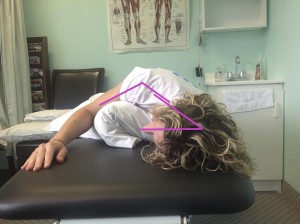
Stomach Sleeping Ergonomics: Using a pillow under one shoulder (and side of trunk) allows the head to be at a less harsh rotation angle and also decreases the difficult angles the shoulder experiences. Furthermore, lowering the other arm to be at your side (see video) will address the shoulder that is not helped by the pillow.
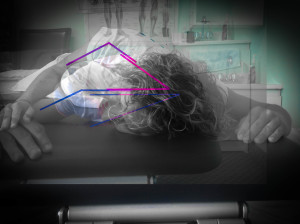
Stomach Sleeping Ergonomics: Comparison of neck and shoulder angles of when using a pillow under one shoulder and side of trunk (pink angle) vs. no pillow (blue angle). Note: no picture/angle is depicted of the scenario of a pillow under the head as that is not necessary to demonstrate how that would negatively affect the neck (see video).

